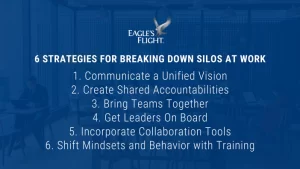Safety in the workplace is a critically important issue, particularly in industries such as construction, manufacturing, mining, and healthcare. According to the National Safety Council, every seven seconds, a worker is injured on the job, leading to loss of productivity, missed days at work, or even loss of life. Although it’s true that individuals must adhere to safety regulations and wear proper safety equipment, having a culture of safety will ensure that employees not only follow safety rules but also are fully committed to achieving safety in the workplace.
Building a culture of safety is a powerful way to ensure that every individual at every level in the organization takes personal accountability for the safety of each other, patients, and the general public. Here are four ways to build a culture of safety.
Create a Roadmap for Change
To fully achieve a culture of safety, you first need to understand your current reality. Surveys and focus groups are two ways to understand current employee attitudes about safety and to identify specific challenges and opportunities related to changing the culture. Creating a roadmap for culture change also requires a clearly articulated safety objective. Whether your goal is to become the industry leader for safety or to reduce illness and injury in the workplace by a specific amount, it will be important to clearly state the goal and the metrics you will use to chart progress. That way, everyone can recognize and celebrate success when you get there.
Ensure Leadership Support
Individuals on the front lines who are working directly with patients, hazardous materials, or heavy machinery are not the only ones responsible for ensuring safety in the workplace. In fact, leaders have a critical role to play in building a culture of safety, including:
- Championing safety as a critical aspect of ongoing company success through regular digital and in-person communication
- Dedicating sufficient resources to equip the workforce with the knowledge and skills they need to ensure safety
- Recognizing employees whose behaviors align with the company’s safety culture goals
Build Knowledge and Skills Through Training
To build a culture of safety, you need more than a traditional safety training program. Traditional training programs are great for providing instruction on how to use equipment or follow certain procedures, but they won’t bring about true culture transformation. To achieve a shift in culture, it’s necessary to provide employees with learning experiences that enable them to think differently about safety and take ownership of their role in creating a culture of safety. When employees attend training that focuses on building a safety mindset, they develop a strong conviction for promoting safety and learn how to:
- Adopt shared responsibility for safety in the workplace
- Take actions that ensure their safety and that of others
- Proactively suggest ways to improve safety through improvements to existing processes and protocols
Measure Results and Reinforce
Any culture change effort requires ongoing reinforcement to ensure individuals retain lessons learned in training and don’t fall back into old habits. Digital learning reinforcement, assessments, and coaching from company leaders will help to ensure the safety culture becomes further embedded in everyday employee activities. Reinforcement activities aren’t meant to teach new information or add more to employees’ workloads. Rather, they should be designed to reinforce what was taught in training, in bite-sized increments over time, so that individuals can incorporate those reinforced lessons into their workdays. In partnership with reinforcement activities, ongoing measurement of results based on clear metrics will help everyone recognize and measure progress.
Meeting your workplace safety goals can be a reality when employees and leaders work together to demonstrate their commitment to a culture of safety. With a roadmap to success, the support of leaders, and training that helps develop a new safety mindset, everyone in the organization will be equipped to improve safety in all areas.












